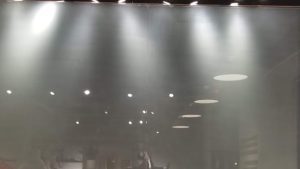
Step into a world where futuristic technology seamlessly blends with everyday life, creating a realm of endless possibilities. Imagine windows that transform at the touch of a button, providing privacy and shade with a simple flick of a switch. This is the magic of switchable film, a versatile innovation that is revolutionizing the way we interact with our surroundings.
Switchable film, often referred to as smart film or smart glass, is a cutting-edge material that has the remarkable ability to change its transparency when an electrical current is applied. From clear to opaque, this transformative film offers a dynamic solution for a wide range of applications, spanning from architectural design to automotive advancements. Its adaptability and modern appeal have captured the imagination of designers and tech enthusiasts alike, paving the way for a new era of innovation and creativity.
Applications
Switchable Film is revolutionizing various industries with its versatile applications. In the architecture sector, this innovative technology is being used to create dynamic windows that can switch from transparent to opaque, providing privacy and controlling light exposure.
Moreover, in the automotive industry, Switchable Film is enabling the development of smart glass solutions for car windows, sunroofs, and even dashboards. This not only enhances the driving experience by reducing glare but also contributes to vehicle safety and aesthetics.
Furthermore, the healthcare field is benefiting from Switchable Film technology through the creation of privacy screens in hospitals and clinics. These films offer patients and medical professionals the option to quickly switch between transparent and opaque settings for enhanced comfort and confidentiality.
Advantages
One key benefit of Switchable Film technology is its versatility. This innovative film can be easily applied to various surfaces, providing a customizable solution for different needs. Whether it’s for enhancing privacy, controlling light levels, or adding a dynamic element to spaces, Switchable Film offers a flexible and adaptable option.
Another advantage of Switchable Film is its energy efficiency. By allowing users to control the amount of light and heat entering a room, this technology can help reduce the reliance on artificial lighting and heating, leading to potential energy cost savings. In addition, the ability to switch between opaque and transparent states can contribute to maintaining a comfortable indoor environment.
Moreover, Switchable Film offers a sleek and modern aesthetic appeal. Its seamless integration into spaces can add a touch of sophistication and contemporary style. With the ability to instantly transform from translucent to clear, Switchable Film brings a magical quality to architectural design, creating visually stunning effects that captivate and inspire.
Future Prospects
In the near future, Switchable Film technology is poised to revolutionize various industries, offering a wide range of innovative applications. From smart windows that adjust tint levels based on sunlight intensity to interactive digital displays that seamlessly switch between opaque and transparent modes, the possibilities are truly limitless.
Get A Switchable Film Quote
As research and development in the field of Switchable Film continue to advance, we can expect to see even more sophisticated and energy-efficient solutions emerge. Imagine a world where buildings adapt to external conditions autonomously, optimizing energy consumption and enhancing occupant comfort. Such advancements could reshape the way we interact with our surroundings on a daily basis.
Furthermore, the integration of Switchable Film technology with Internet of Things (IoT) devices opens up exciting new avenues for interconnected smart systems. Imagine a scenario where your entire home is equipped with smart windows that not only provide privacy on demand but also communicate with other IoT devices to create a seamless, responsive living environment. This convergence of technology could lead to a future where convenience, sustainability, and aesthetics harmoniously coexist.
















